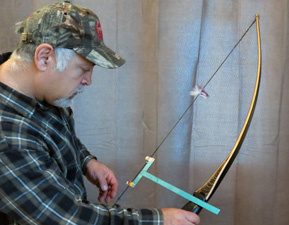
 Two days ago, I was shooting in my backyard range when I realized that my longbow had suddenly become a little noisier. I found this odd since nothing had changed in my set up and my bow was previously quiet. I was still using the same string, arrows, nocking point and string silencers too, so it definitely wasn’t something that occurred due to a change in these things.
Two days ago, I was shooting in my backyard range when I realized that my longbow had suddenly become a little noisier. I found this odd since nothing had changed in my set up and my bow was previously quiet. I was still using the same string, arrows, nocking point and string silencers too, so it definitely wasn’t something that occurred due to a change in these things.
Nevertheless, it happened and, when sudden changes in the way your bow performs occur, the archer should pay attention and try to figure out why.
My first thought was that the recent influx of bitter cold weather had something to do with it. Perhaps, the bow or carbon arrows were reacting to a drop in temperature and just being noisy. Maybe my extra clothing was having an effect on my shooting form or, God forbid, I might have just been shooting sloppily, perhaps even plucking at the string, for instance.
Just to be sure, I shot a few more times, focusing intensely on form. Then I removed my outer layer and shot some more. The noise level was still higher than it should have been.
So, I took the bow inside and checked limbs, rest and string for any signs of wear or damage. They all seemed fine. The silencers were worn, from hard use in the field so I decided to replace those, but the big thing I noticed was that my brace height (the distance from the bowstring to the deepest part of the riser on the belly of the bow) had altered enough so that my bow was out of tune. And, an out of tune bow is much noisier than one in tune.
There, I figured, was the main culprit.
It only took a little twisting of the bowstring before I got it back to the brace height is shoots best at. While I was at it, I replaced my string silencers and confirmed my nocking point was where it should be.
Later in the day, I went outside and shot a few more arrows. I’m happy to report that my longbow was back to its old, quiet, unassuming self. Arrow flight is noticeably better again too — something that is much easier to assess when you shoot at longer ranges, by the way.
The lesson to be learned from all this is that you need to check the set up of your bow every now and again. Sometimes, for whatever reason, it can change and slip out of tune.
And to check the set up, you should know the ideal brace height and position of the nocking point when it is in tune.
Long ago, when I first tuned my bow for that string and the arrows I shoot, I wrote down these things and now I have them committed to memory. This saves a lot of fiddling around you need to get back in tune.
- 4299 views

